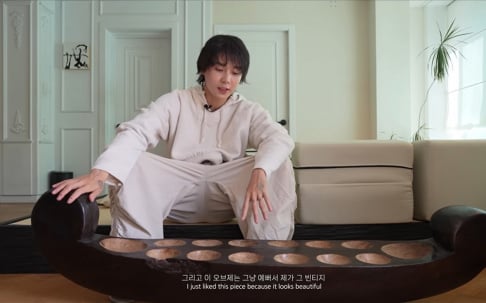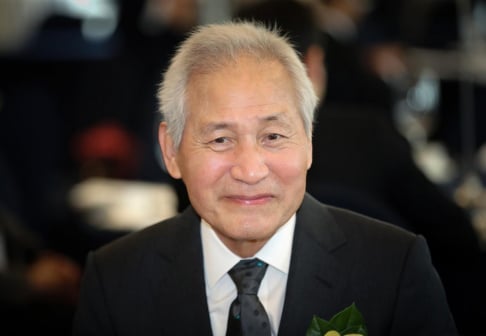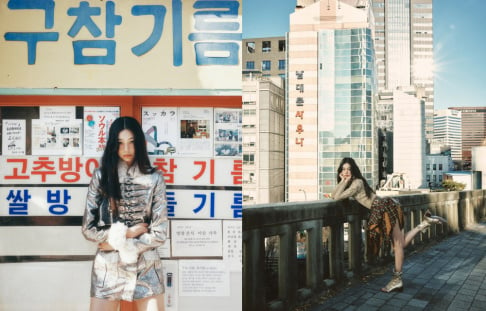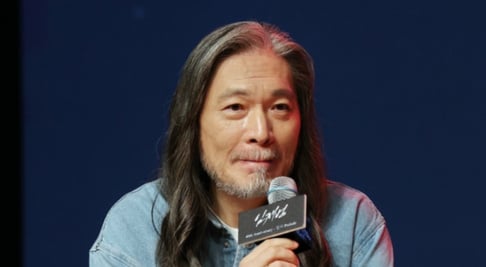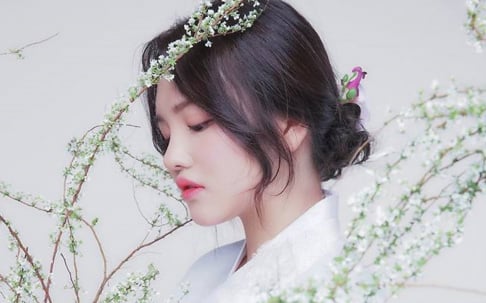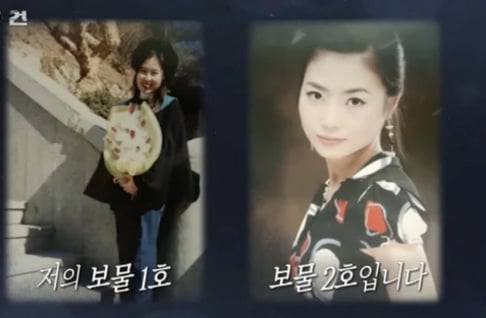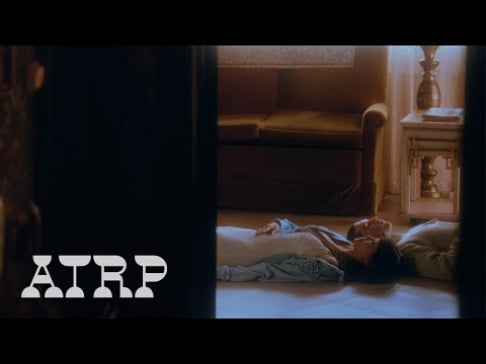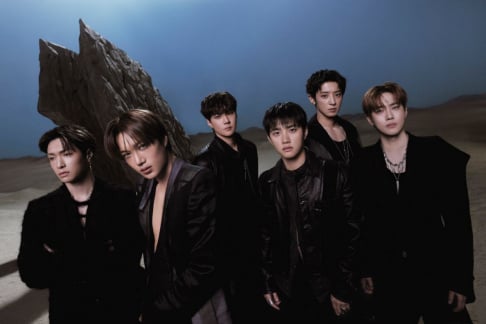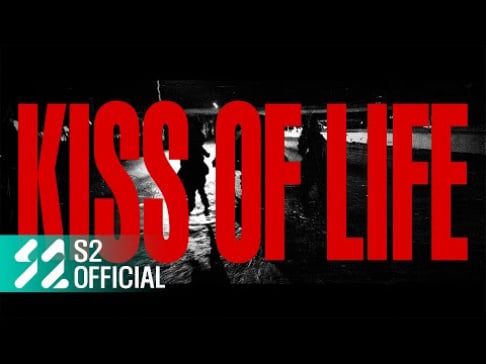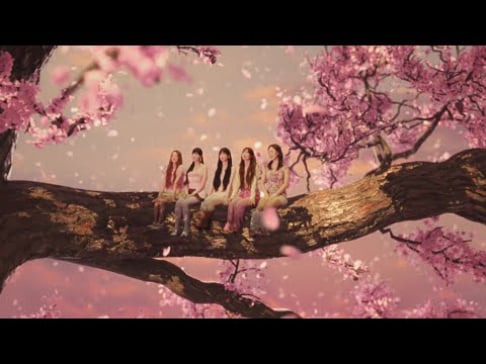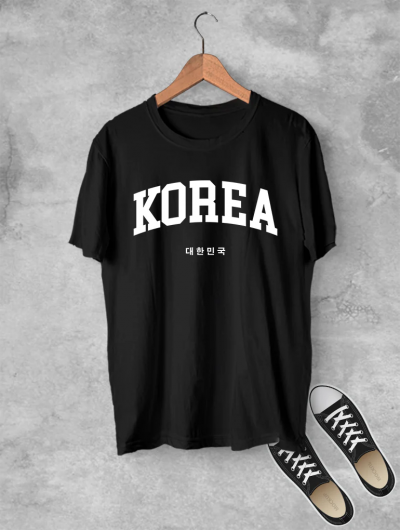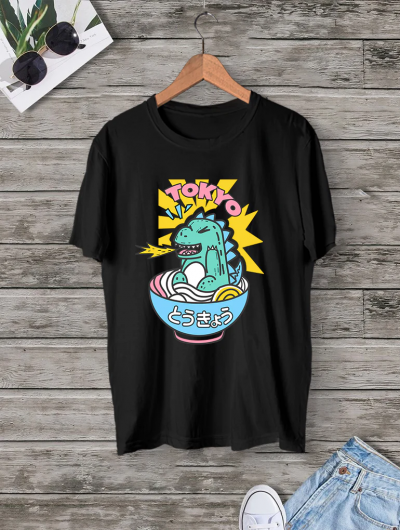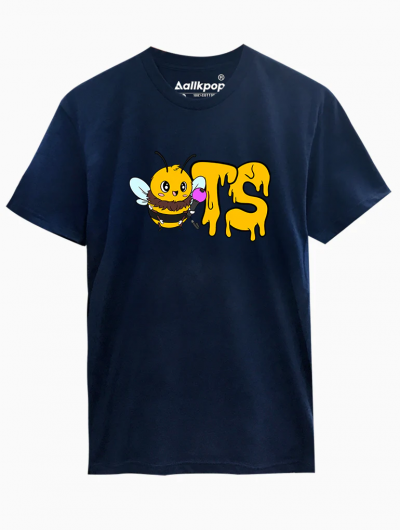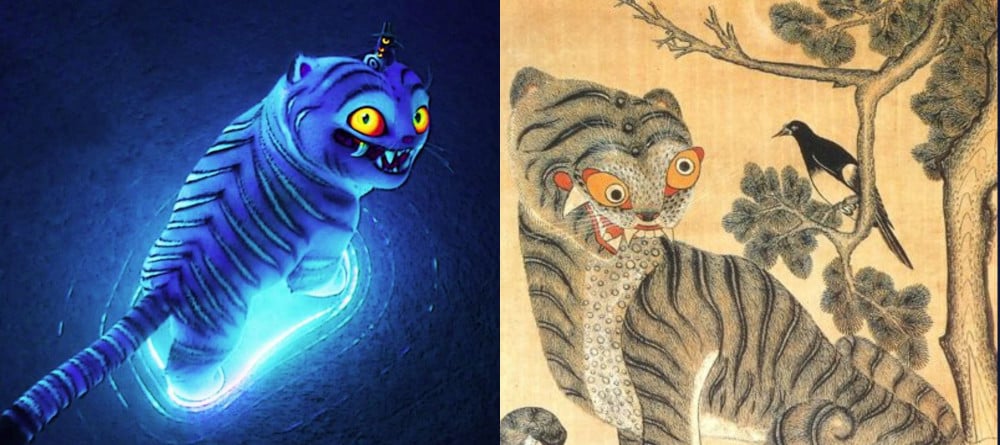
‘K-Pop Demon Hunters’ has taken over the world through its blend of music, action, and mythology. The hit Netflix animated film merges the fantastical world of myth with the global spectacle of K-pop, reviving timeless folkloric symbols through vivid imagery. Figures like the tiger, magpie, and grim reaper, long embedded in Korean folklore, are reimagined in ways that are both visually stunning and culturally meaningful.
From Tiger and Magpie to the Grim Reaper, here are the Korean symbols woven into ‘K-Pop Demon Hunters’:
The Tiger, and Magpie
Derpy, the blue tiger, and Sussie, the six-eyed magpie wearing a tiny black gat, are the scene-stealers in the film. These characters draw inspiration from ‘jakhodo,’ a traditional Korean folk painting that pairs the tiger and magpie as symbols of protection and good fortune. In Korean culture, the magpie is seen as a messenger of good news, while the tiger is regarded as a guardian that wards off evil and protects the home.
Sacred Tree
‘KPop Demon Hunters’ features a large tree adorned with colourful ribbon ties. This is no ordinary tree; it’s a dangsan tree, which symbolises a sacred space in Korea. Traditionally, villagers worshiped these trees as the guardian spirit of the village. The ribbons echo Korean shamanistic practices, often tied during rituals to invoke blessings and protection.
Grim Reapers
The Saja Boys’ demonic alter egos draw loose inspiration from Jeoseung Saja, Korea’s version of the grim reaper, tasked with collecting souls and guiding them to the afterlife under King Yeomra’s command. In their performance of “Your Idol,” the members transform into traditional grim reapers, donning black robes and the classic gat, a traditional Korean hat.
Dokkebi
Dokkebi, also known as Korean goblins, another mystical creature in folk stories, are featured in the film as demons fighting against HUNTR/X. With forms ranging from one-eyed beings to horned figures with sharp teeth, ‘KPop Demon Hunters’ vividly reflects the traditional depictions of dokkaebi found in Korean folklore.
Norigae
While HUNTR/X dazzles with bold fashion, hair, and makeup, there’s a finer detail tucked into their “How It’s Done” performance: the norigae. This tassel ornament, once a cherished accessory worn with hanbok by women across all classes in the Joseon era, becomes a modern fashion statement when fastened to the members’ pants and skirt. For K-drama fans, the norigae is a familiar sight, often seen adorning characters in historical dramas.
Water Demons
In the bathhouse battle between HUNTR/X and Saja Boys, water demons emerge from the surface. The film depicts them true to Korean lore: pale figures with long, wet hair. According to legend, these evil spirits tempt humans into the water and pull them under to a watery grave. Once caught in the demons’ grasp, escape is impossible, and the doomed are dragged to their death.
Traditional Weapons and Shamanism
"HUNTR/X’s battles against demons bear a striking resemblance to Korea’s traditional shamanic rituals known as gut. In these ceremonies, shamans sing and dance while wielding swords, bells, knives, and fans to connect with the divine and drive away evil spirits. The film’s director blended K-pop with shamanism, drawing inspiration from gut, even noting in an interview that a gut could be seen as ‘the early version of a concert.’ Moreover, the weapons carried by HUNTR/X have their special meaning and echo the ritual tools, like traditional swords and knives, used by shamans.
By reimagining symbols such as the tiger, magpie, grim reaper, dokkaebi, and shamanic rituals, the film introduces global audiences to Korean folklore symbolism, proving that tradition and modern pop culture can coexist in ways both powerful and resonant.
SEE ALSO: Weverse issues apology after employee involved in personal data leak
 SHARE
SHARE

